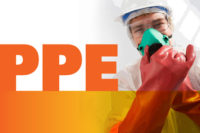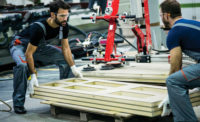More recently, product innovations which focused on style, comfort and adaptability helped the U.S. personal protective equipment market develop into a $7.5 billion a year industrial product category.
PPE market matures
Fast forward to 2012, and the U.S. market for personal protective equipment has matured. The pace of regulation and innovation has leveled out. Manufacturers are focused on the consolidation of product lines and the creation of large multi-line manufacturers intended to provide economies of scale necessary to offset the effect of shrinking gross margins on product sales.
The market is also seeing a continued influx of imports in almost every category and manufacturers are fighting the ever-increasing perception of commoditization in the marketplace shared by many end-users.
While innovation still drives the market for U.S. manufacturers, it’s hard to ignore the increase in “me too” importers that are stealing market share and marginalizing U.S. manufacturers.
Challenges abound for U.S. manufacturers of branded personal protective equipment products. With little or no help from the economy and the number of U.S. workers wearing PPE decreasing annually, manufacturers must find ways to take market share and maintain gross margins though stronger product differentiation and brand awareness.
Critical to the success of the differentiation and branding process is effective product messaging which is market focused, clearly and concisely constructed and delivered consistently throughout the organization.
Too often even the best messages break down before reaching the decision makers within your end-user accounts. How can you make sure your network of company sales representatives, manufacturer’s representatives and distributors are consistently making the best case for your products?
On-site needs assessments
One rather effective tool that is commonly used by safety products manufacturers is the facility survey, needs analysis, site assessment or walk-though. Safety manufacturers have been successfully using these processes for decades. The objective is to design a list of questions that evoke answers that present a very compelling case to your end-user’s need for a specific solution that just happens to be manufactured by your company.
This case should be supported by identifiable hazards, OSHA standards, NIOSH recommendations and other credible citations that the manufacturer can use to demonstrate the undeniable need for their products in the end-user’s facilities. In most cases upon completion of the survey, manufacturers will require the sales representative to prepare a report for the end-user citing the hazards or conditions identified, along with the applicable authoritative regulation or standard and, of course, the very compelling product recommendation.
Manufacturers who have invested in this process have cited success rates of up to 85% and average revenue per survey completed of $10,000 or more. Because this process can be time-consuming when done correctly, manufacturers typically target only the largest facilities (250 employees or more) for these surveys. Paper-based processes are prone to break down — the right questions aren’t always asked, answers to questions are not relevant, prior site surveys are rarely accessible and end-user reports lack the proper messaging to consistently close a high percentage of potential deals.
Mobilize your survey process
Despite the ready availability of leading-edge mobile technology, most manufactures continue to rely on decades old technology to guide their survey process.
However, we have seen a recent trend in the number of safety products manufacturers that have automated their survey processes and the results have been very impressive. In cases where the survey/reporting process would take 8-10 hours and up to two weeks might lapse before the end-user would get the survey results, the process can now be completed in 2 – 3 hours and the survey results/recommendations are in the hands of the end-user before the rep even leaves the parking lot.
Sound too good to be true — it’s not.
Sound like a lot of work — not really.
Existing processes can be automated and in place in just weeks. Sales representatives can be trained to the use the software in less than hour. Return on investment starts day one.
Go electronic
An automated survey process essentially works as follows:
- Facility surveys which were previously recorded on paper forms or disconnected spreadsheet applications are now completed on an electronic form. Sales reps log into a secure portal to review previously completed surveys or to complete new surveys or inspections on any number of mobile devices including smartphones, tablets or laptops. Drop down menus are used to make sure all questions are answered and answered with an acceptable response. Once all the information has been captured, the completed survey is moved to a database.
- Next the software applies the manufacturer’s customized business logic and rules to the survey data creating site-specific product recommendations which are automatically presented with preformatted text in a dynamically generated report/proposal. Cover letters, executive summaries, product literature, sell sheets and other relevant documents are also dynamically created and pulled into the end-user report to create a powerfully informative presentation of your products. You have almost total control of the messaging process!
- Since the survey data is stored in a database, management can run various reports on all surveys completed to date. Reports showing surveys completed by rep, surveys completed within a certain date range or region and surveys possessing any set of given attributes (industry, employee size, current product usage, etc.) are readily available to management.
- The utilization of mobile technology also allows for photo-capture, bar code reading, electronic signature capture and GPS tracking.
Manufacturers that have automated this process are finding that not only are they able to complete significantly more surveys in less time, but their results are improved dramatically as well, due to their ability to control the message and consistently and professionally deliver that compelling argument for their products (a solution which provides the end-user full compliance with all applicable safety regulations). Industrial products distributors are noticing also; and the value added by this process is creating another very compelling case for distributors faced with the ongoing decision of which competing manufacturers they want to partner with.




